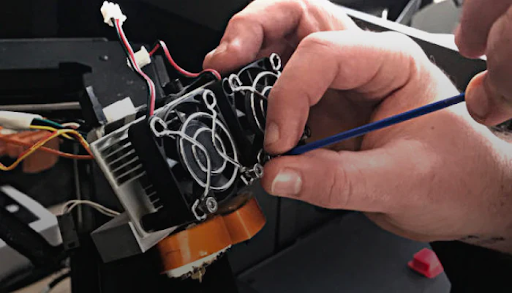Impression 3D: Indulge In Sustainable Practices
The advent of 3D printing, known in French as “impression 3D,” has revolutionized manufacturing and production across various industries. From creating intricate prototypes to producing end-use parts, the technology has opened new avenues for innovation and efficiency. However, as the world becomes increasingly aware of environmental challenges, the focus has shifted towards integrating sustainable practices in impression 3D. This blog explores the impact and use of sustainable practices in 3D printing, with a particular emphasis on how companies like Bambu Labs are leading the charge in promoting eco-friendly initiatives.
Rise of Impression 3D
Impression 3D has grown exponentially over the past few decades, transitioning from a niche technology to a mainstream tool. Its applications span across multiple sectors, including healthcare, aerospace, automotive, and consumer goods. The ability to create complex geometries with precision and minimal material waste has made 3D printing an attractive option for manufacturers looking to optimize production processes and reduce costs.
Sustainable Practices in Impression 3D
Sustainable practices in impression 3D can be categorized into three main areas: material selection, energy efficiency, and waste management. By addressing these aspects, manufacturers can reduce the ecological footprint of their 3D printing operations and promote a more sustainable future.
Energy Efficiency
Energy consumption is another critical factor in the sustainability of 3D printing. The process of melting and extruding materials requires significant amounts of energy, particularly for large-scale production. To address this, manufacturers are investing in energy-efficient 3D printing technologies and processes.
Bambu Labs has pioneered several initiatives aimed at reducing the energy footprint of 3D printing. These include the development of more efficient printers that operate at lower temperatures and consume less power. Additionally, advancements in rapid prototyping techniques have enabled faster print times, further reducing energy consumption.
Waste Management and Recycling
Waste management is a crucial aspect of sustainable 3D printing. Traditional manufacturing methods often result in substantial material waste, but 3D printing can significantly reduce this by using only the necessary amount of material for each part. However, there is still some level of waste generated, primarily in the form of support structures and failed prints.
To tackle this issue, Bambu Labs and other industry leaders are developing recycling programs to reclaim and reuse 3D printing materials. These programs involve collecting and processing waste materials to create new filaments, thus closing the loop and minimizing the need for virgin resources. Moreover, advancements in software have improved the precision and accuracy of 3D printing, reducing the likelihood of errors and material waste.
Eco-friendly Materials
Bambu Labs has invested heavily in research and development to create sustainable 3D printing materials. Their range of eco-friendly filaments includes options made from recycled plastics and bio-based resins. These materials offer comparable performance to traditional filaments while significantly reducing environmental impact. Additionally, Bambu Labs has developed composite materials that combine biodegradable components with high-strength fibres, providing a sustainable alternative for industrial applications.
Comprehensive Recycling Programs
Bambu Labs has implemented a comprehensive recycling program to address the issue of material waste. This program involves collecting waste materials from customers and processing them into new filaments. By promoting a circular economy, Bambu Labs ensures that their 3D printing operations have a minimal environmental footprint. Additionally, their software solutions provide detailed analytics on material usage and waste, helping users optimize their printing processes and reduce waste.
Conclusion
The integration of sustainable practices in impression 3D is essential for minimizing the environmental impact of this transformative technology. By focusing on eco-friendly materials, energy efficiency, and waste management, companies like Bambu Labs are leading the way in promoting sustainable 3D printing. The future of sustainable impression 3D looks promising, with advancements in biodegradable materials, energy-efficient processes, circular economy models, sustainable design practices, and industry collaboration driving positive change.

